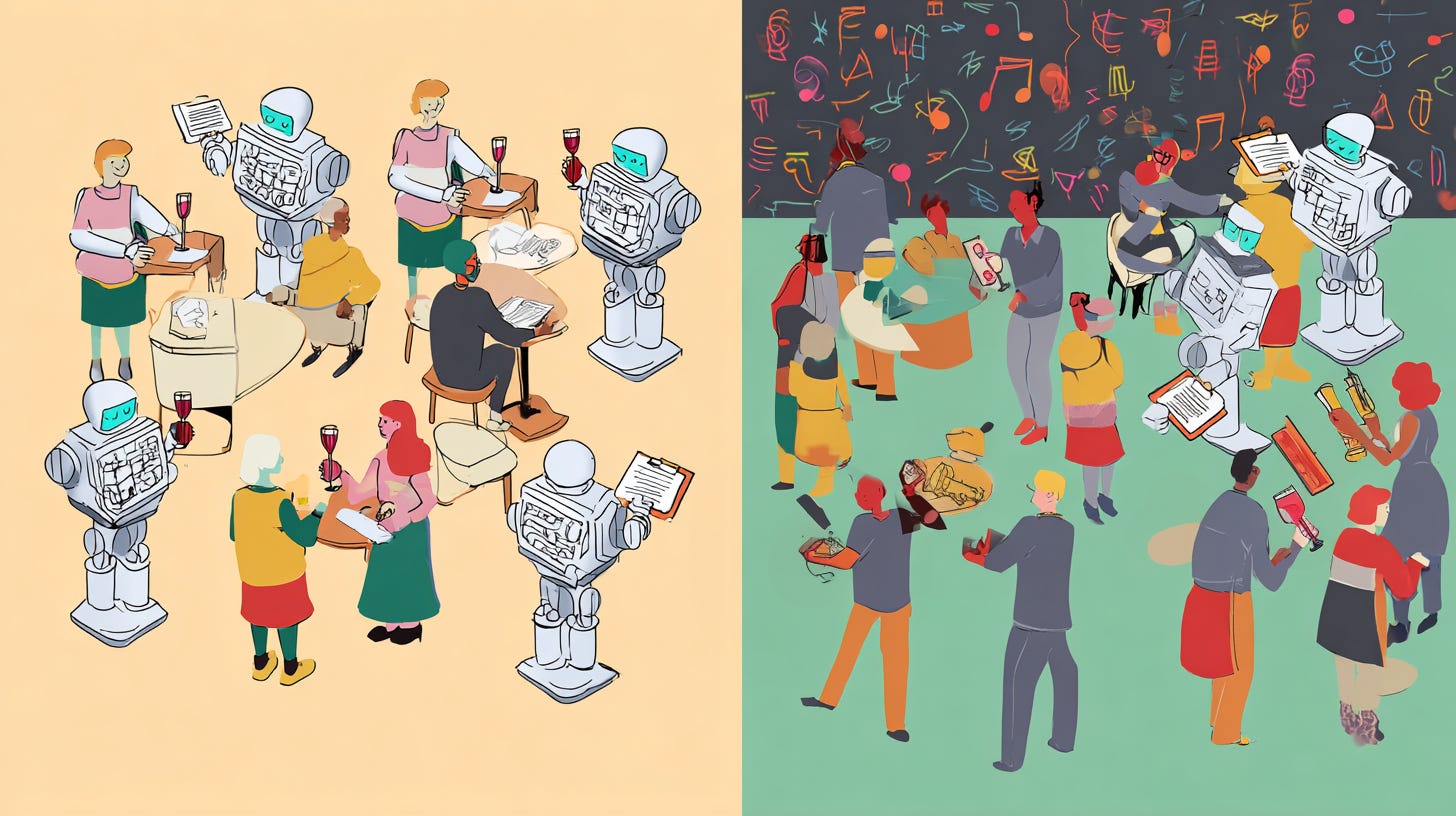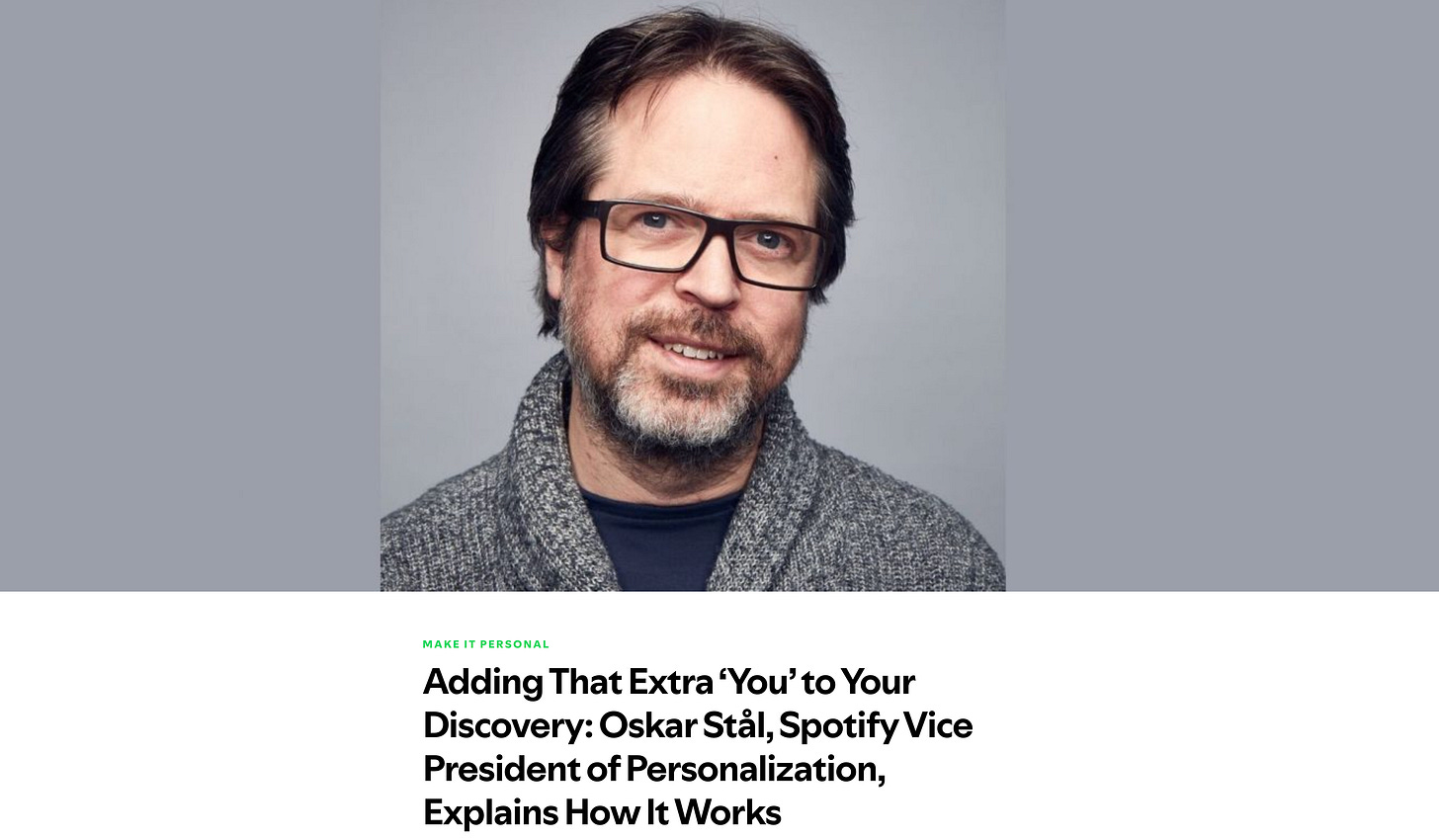Learning from Spotify: How AI Might Change the Way we Choose and Buy Wine. And Why we May not Like it.
Some people imagine a Brave New World in which personalised AI bots/LLMs will helpfully replace wine critics.
“Artificial intelligence has the power to revolutionise how people find wines they will love. Instead of relying on the subjective opinions of salespeople, critics, or even well-meaning friends, customers could receive personalised, data-driven suggestions that align with their tastes.
The role of the wine salesperson, too, could evolve. Instead of being gatekeepers of knowledge, they can become guides, introducing customers to tools, services, and AI systems that enhance the buying experience. They wouldn’t need to tell someone what they ‘should’ enjoy but instead help them explore their options in a judgment-free way
“AI is reshaping the way we consume. It’s no longer just a tool but quickly evolving into the decision-maker that guides, and in many cases defines, our choices.”
These comments - made on separate occasions - by Priscilla Hennekam, the Australia-based ‘driving force behind the global movement, Rethinking the Wine Industry’ caught my attention, because they chime with other optimistic reactions I have encountered to whatever artificial intelligence LLMs - Large Language Models - have to offer beyond what ChatGTP et al are already delivering.
So, I thought I’d use this platform to respond and hopefully spark a little more discussion.
So, my first question is ‘whose AI?’
We have become used to Google, Meta and Amazon having near monopolies in their sectors. Why do we really believe we are going to live in a world with a wide range of chatbots? That’s certainly not the way the tech giants are thinking as they invest their billions.
And how will they recoup these mind-boggling sums?
Are we - as users - going to pay? Or will it be the businesses from whom we are going to do our shopping?
A brief glance at the tech giants’ current business models may provide a clue to the answer.
But how will the AI ‘decision-maker that guides, and in many cases defines, our choices’ work?
My guess is that, whether we access it via an existing service such as Google, Alexa or Siri, or directly, like ChatGPT, it may resemble Spotify, which already uses a lot of AI to deliver music and podcasts to nearly 700 million monthly users.
Since 2013, Spotify has acquired several AI businesses, including Tunigo, Echo Nest, Seed Scientific, Sonalytic, Niland, and Machine Learning Day. Estimates put the cost of these acquisitions at ‘hundreds of millions to a billion dollars.’
This 2021 interview reveals a lot about how and why Spotify’s personalization bots process half a trillion ‘events’ every day.
It does not take much imagination to see how a Spotify model could work for wine if -and I concede this is tricky - it could gather similar levels of data about our vinous preferences to what it has about our tastes in music.
How many active musicians? How many wineries?
The parallels between musicians and tracks, and wineries and wines, are interesting. In theory, there are around 12m artists who have uploaded at least one track to Spotify. But it is estimated that the number of ‘active’ musicians who stream monthly and earn some royalties is probably between 200,000 and 300,000.
The number of active wineries in the world is estimated at between 101,000 (IBISworld) and, if you include all the tiniest producers, a million. So, it might not be too unfair to say that both sectors have 100,000-3,000,000 players who are worth talking about.
Now let’s look at how AI works for the musicians on Spotify who get a million streams per month.
And how much do the musicians earn?
At the average rate of $0.004 per stream (the midpoint between the low and high rates of $0.003 and $0.005 per stream), these artists would gross $4,000 per month, or $48,000 annually.
Substantially less than the average US wage of $66,621.80.
From this they will have to pay the label/distributor 30% ($1,200 per month)
And, unless they write and publish their own work, the songwriter/publisher might expect 25% ($700/month)
The artist’s net income after all this would be $4,000 minus $1,900 . Which comes to a meagre $2,100. So $25,200/year
Now to the key question: how many musicians rack up a million streams per month?
To which the answer seems to be 0.2%.
Now, these are all my back-of-an-envelope calculations. I could be out by 0.1% or so, but one should note that, in a 2024 interview with Music Business Worldwide, Spotify VP Charlie Hellman said that 22,100 - under 10% - artists earned over $50,000 per year. Which merely illustrates the long tail nature of the Spotify model in which over 90% of its musicians fail to make 75% of the US average wage.
Other income
Of course, the parallels between Spotify and wine AI are far from exact. Musicians can perform live and sell CDs and merch. The equivalent for wineries might be the money they make from DTC, wine tourism and events - models that will not work equally well for every kind of business.
And, crucially, of course, musicians can - and do - combine their artistic endeavours with other work. How this might apply to wineries is less clear.
Data gathering and distribution
As I pointed out, the vinous model will still have to find a way to collect huge amounts of reliable wine-preference data, and to include data on the other people who might be expected to share any bottle a user might choose to buy.
There is also the small matter of distribution. It is as simple for Spotify to stream a track by an obscure Albanian folk singer as one by Adele. This doesn’t apply to wines and wineries, especially in markets like the US with its three-tier-system or Canada and the Nordics with their monopolies. But even in ‘free’ markets, the economics of getting a single bottle equivalent of a song by that Albanian singer delivered to one’s home, make little sense to anyone who isn’t really passionate about getting it.
Follow the money
Finally, to return to my earliest question, how is this all going to be financed? Spotify relies on a combination of advertising and subscriptions, neither of which will be nearly as remunerative for a vinous equivalent.
As for the content, Spotify does not allow labels and artists to buy space on the home page, playlists or banners. Inclusion here is apparently decided by the platform’s editorial teams and based on ‘editorial judgment, listening data, and algorithmic personalization’
But, unsurprisingly, labels and/or artists can pay for ‘promotional tools’, including ‘Marquee’ pop-up recommendations, targeted ‘Showcase sponsored recommendation’ cards for new releases, and ‘Sponsored playlist ads’.
Today, big wine companies put hefty amounts of cash and effort into SEO and AI content-creation to ensure that their brands come at the top of any brower’s list. Why should we imagine they are not going to do this when the decision-maker that guides, and in many cases defines, our choices is an AI bot?
I actually agree with Priscilla Hennekam that AI will indeed drive a lot of decision making in all our lives. I fully expect it to offer to fill my fridge and larder, to help plan and book my holidays, and even to write my Christmas cards and to choose and buy the gifts.
How much it will help the tens of thousands of smaller wineries, or wine drinkers who are looking for impartial advice on what to drink, is another question, that I’d suggest Spotify is already helping to answer.
In other words, unlike those who look forward to the Brave New World of AI, I still believe in there being a role for good wine critics and competitions, and peer-review sites like Vivino.
Postscript
Following an exchange on LinkedIn before I finalised this post, Priscilla Hennekam kindly directed my attention to this 2024 paper.
in which the authors state
“The use of LLMs to match content to users’ psychological profiles… has been shown to be effective in altering attitudes, intentions, and behaviors via appeal to their motivational states…
The ambition of making conversational interfaces and generative AI systems unavoidable mediators of human– computer interaction signals a turn from the attention economy, whereby access to the limited resource of human attention is traded through advertising exchanges, to the intention economy, whereby commercial and political actors bid on signals that forecast human intent. This transition would empower diverse actors to intervene in new ways on shaping human actions. This ambition must be considered in light of the likely impact such a marketplace would have on other human aspirations, including free and fair elections, a free press, fair market competition, and other aspects of democratic life.”
In other words, AI may not be nearly as interested in giving us what we already like as in “altering [our] attitudes” so that we become ready to buy what they - or their customers - want to to buy.
Brave New World, indeed.






I was struck by the comment “Instead of relying on the subjective opinions of salespeople, critics, or even well-meaning friends, customers could receive personalised, data-driven suggestions that align with their tastes.” There’s a big assumption here. It suggests that recommendation is a data-acquisition task, based on some - notionally - objective framework. I don’t buy that (pun intended). It’s entirely possible that sales assistant recommendations and family & friends are favoured simply because people like talking to people and value the exchange inherent in the experience. And even more that what people are looking for is not something that “aligns with their tastes” but that wine is often an expression of “taste” that can ONLY be accurately deduced through the cues of interpersonal exchange. There is a vast amount of psychology that would back up the idea that “flawed” forms of “subjective” wine recommendation are a feature not a bug.
I feel like I have missed something in your choice of a digital pure play like Spotify as your straw man for AI and choosing wine. Why not a riff on Vivino? I have my preferences, can get the recommendation, can find the wine and buy it. Not a big step to delivery. The big supermarkets have taken the lions share of wine ecommerce and have strong platforms. Here Dan Murphy’s can connect my physical and online sales and provide pick up, click and collect, and delivery but currently have terrible recommendation engines. They also connect hundreds of small producers to consumers via drop shipping. Why not a Vivinofication of big retail?